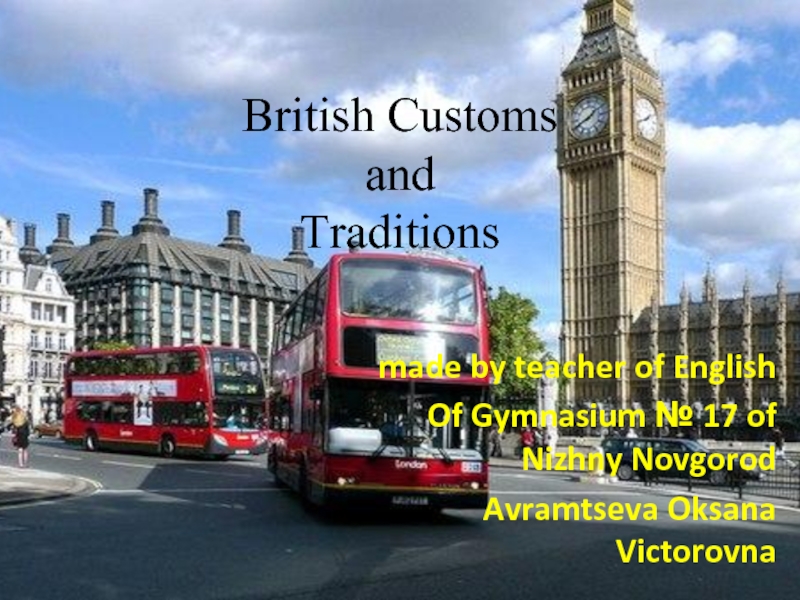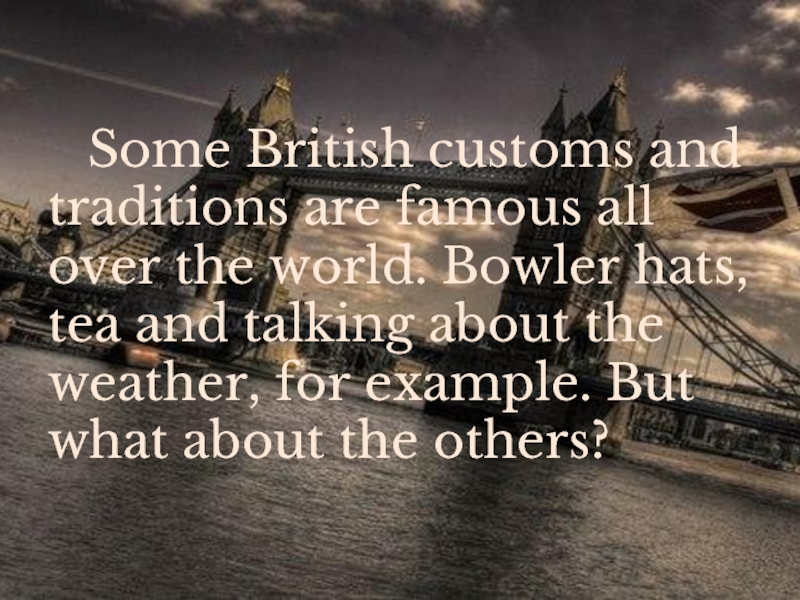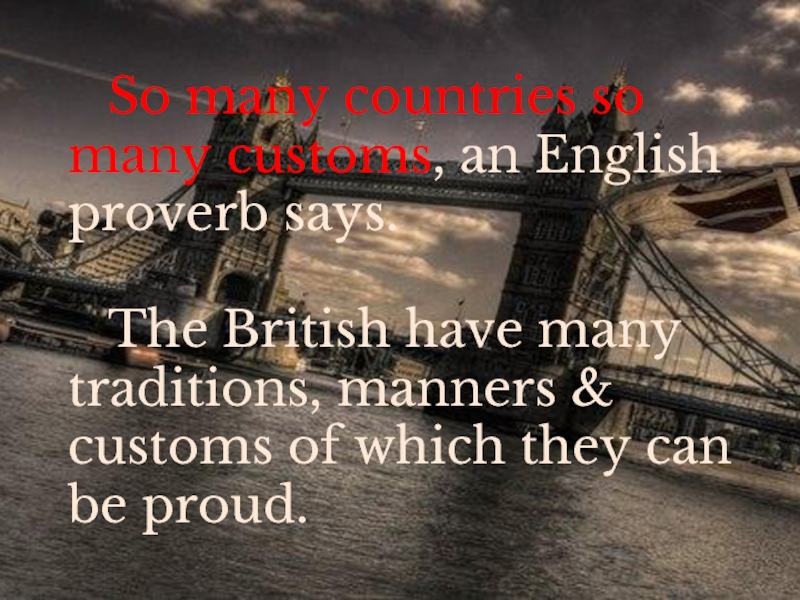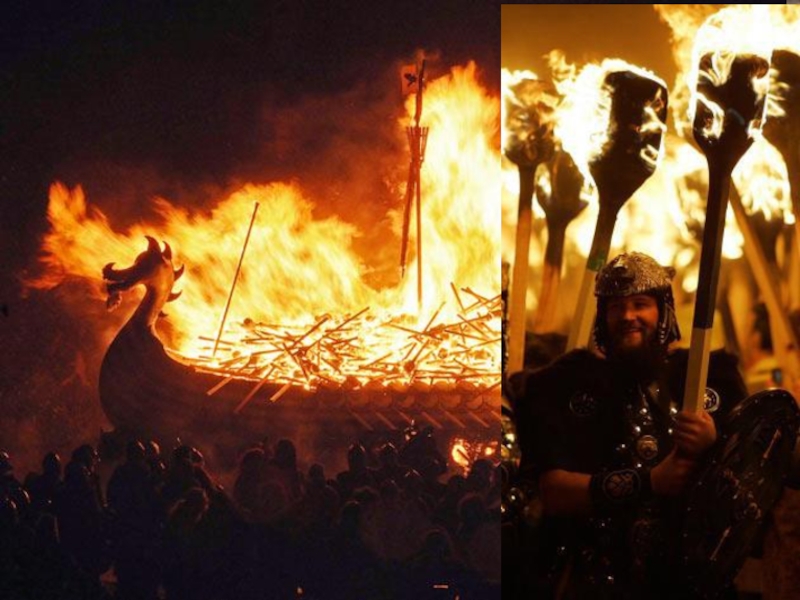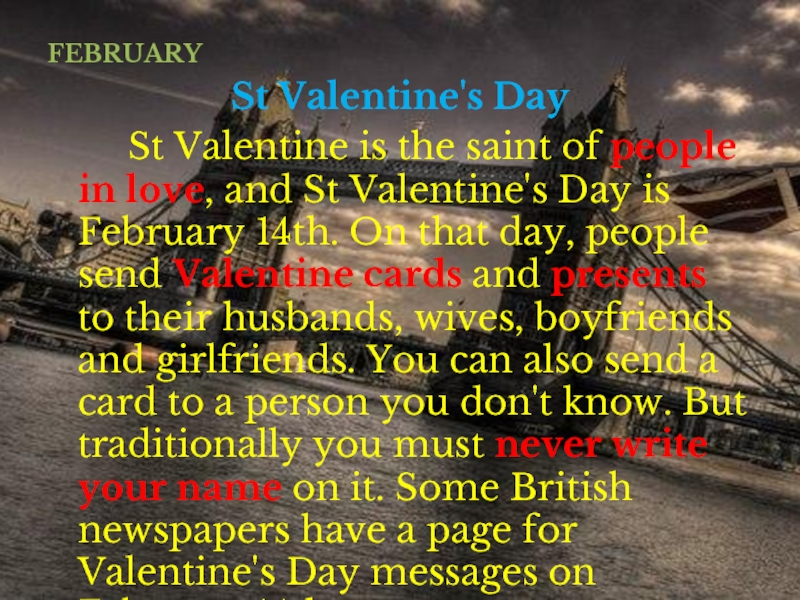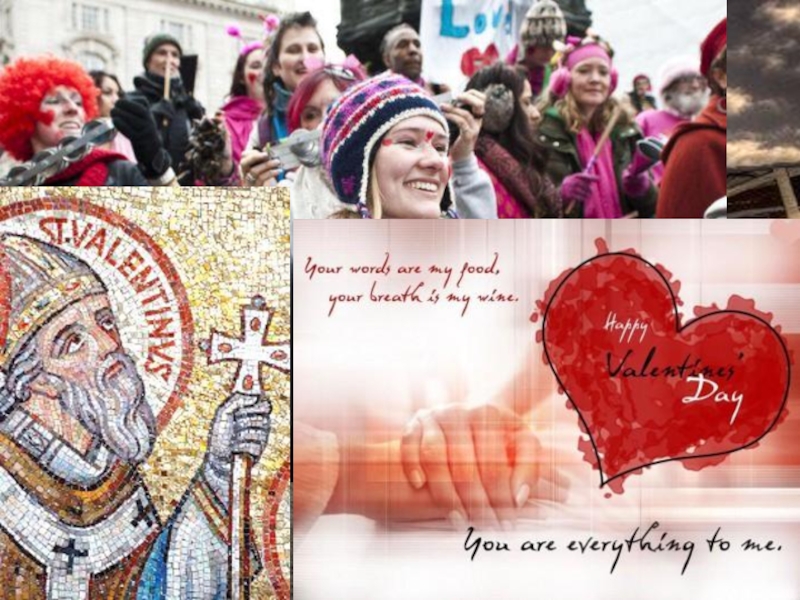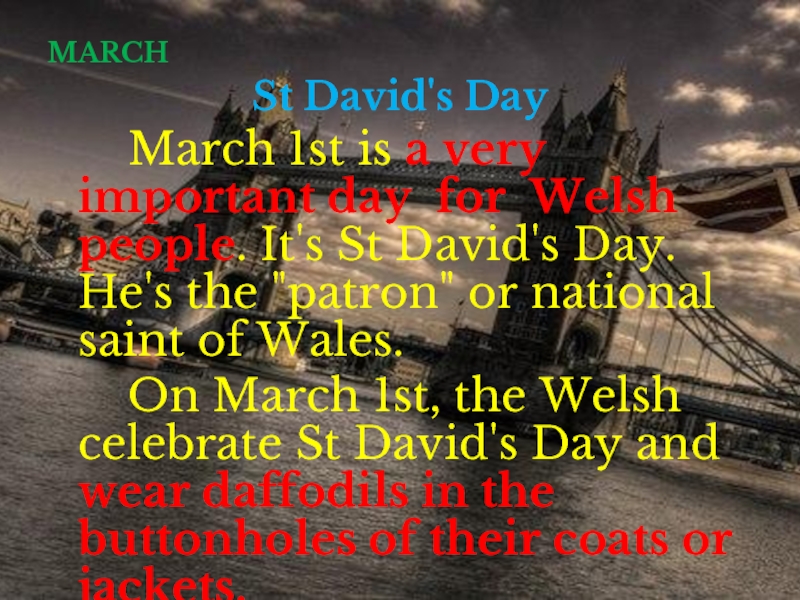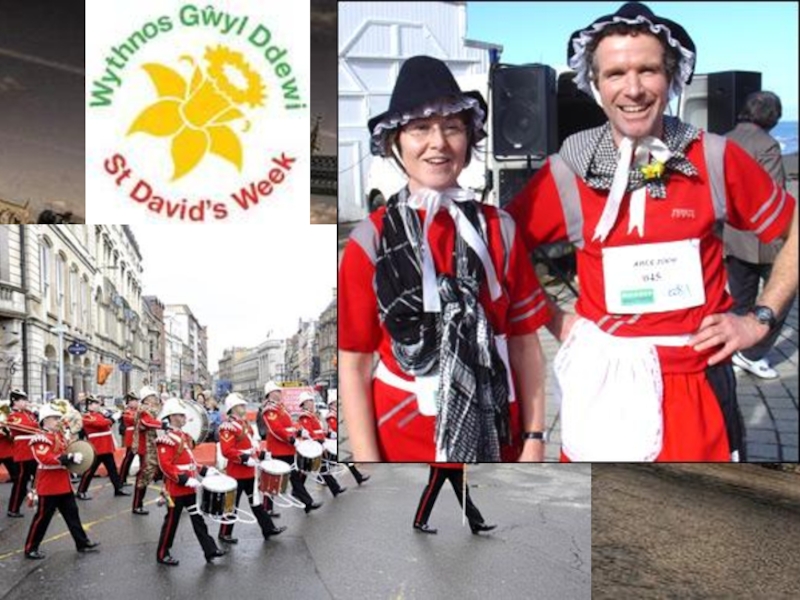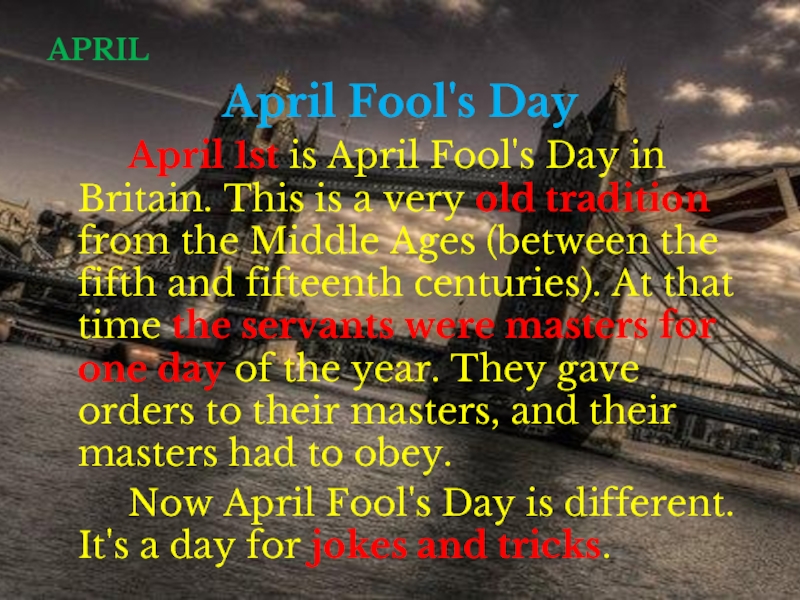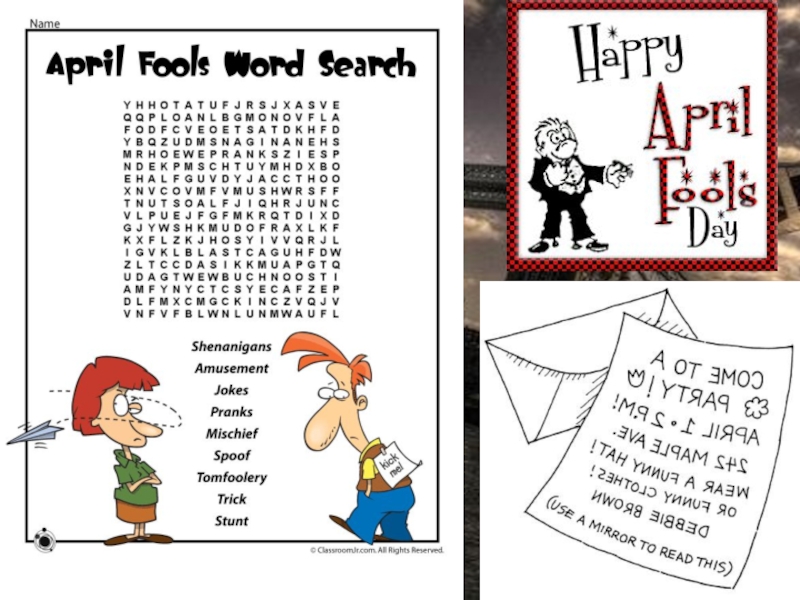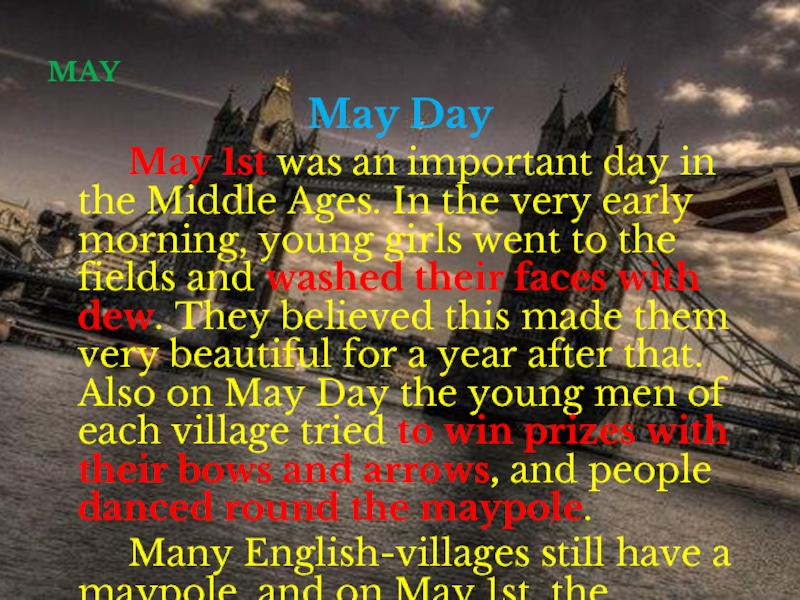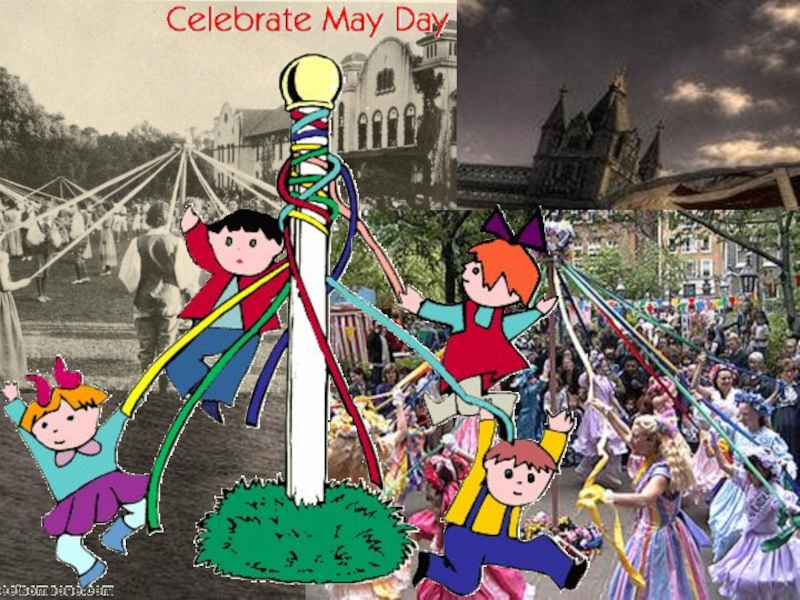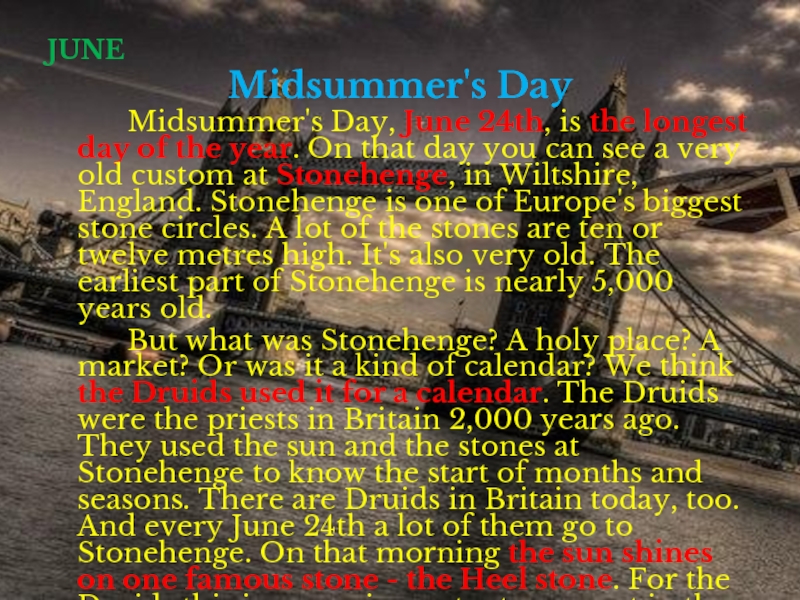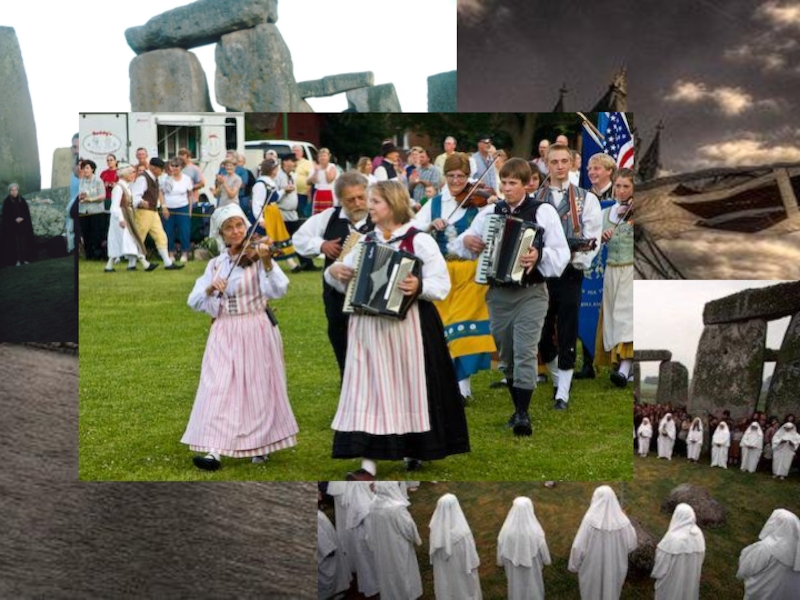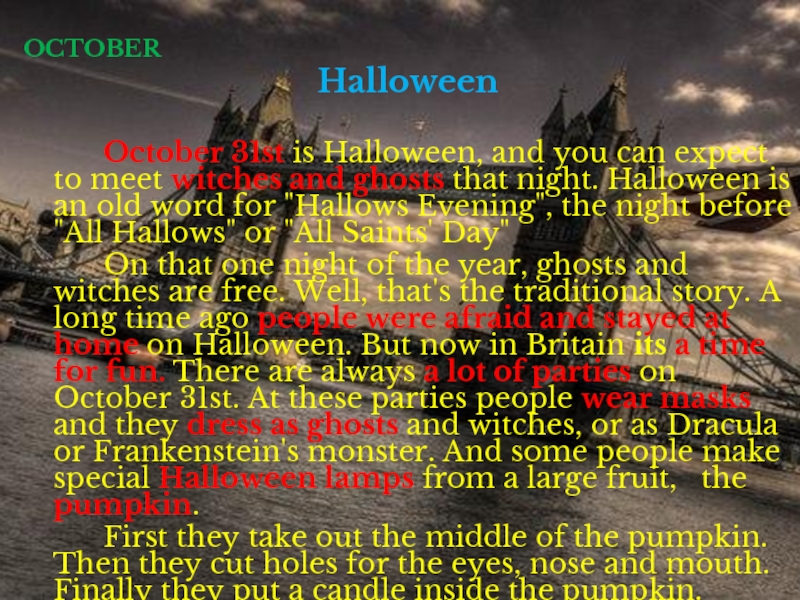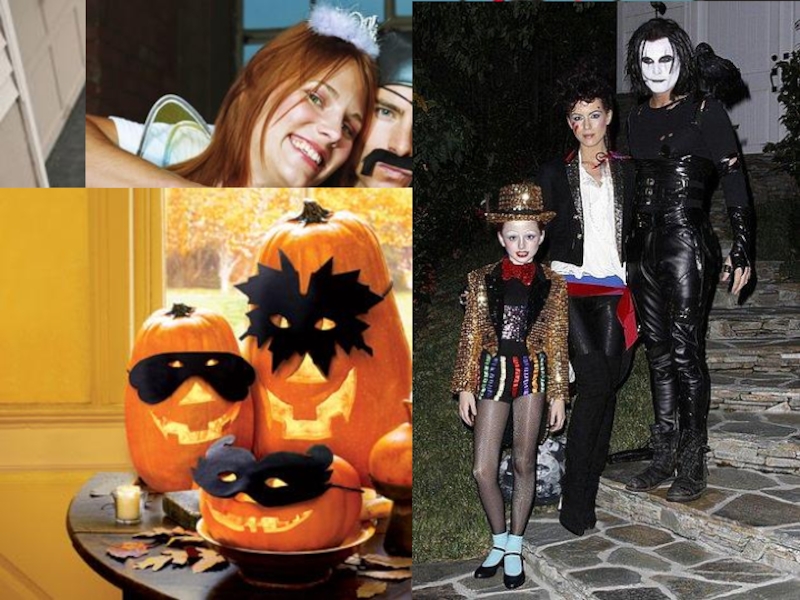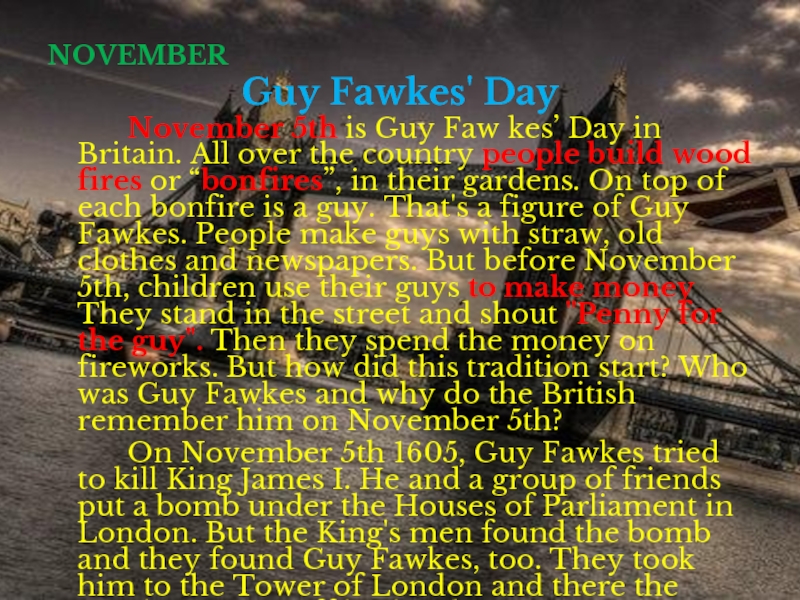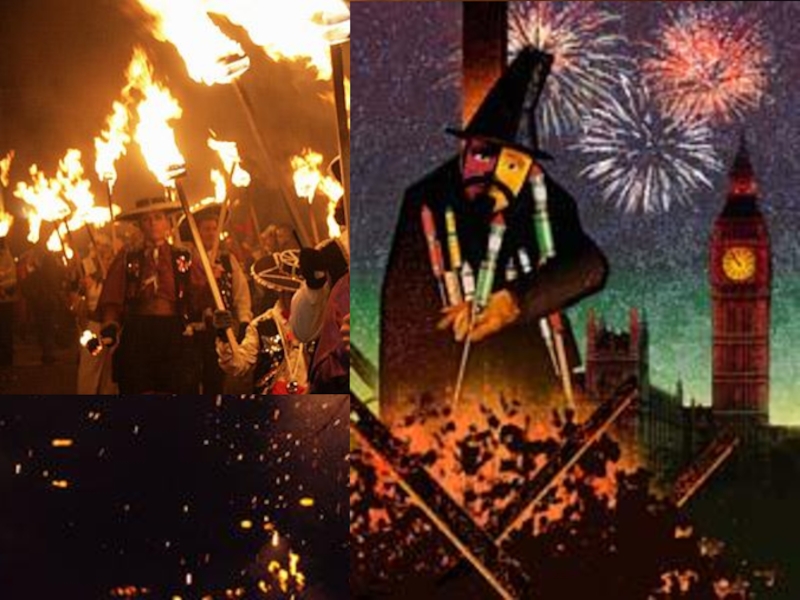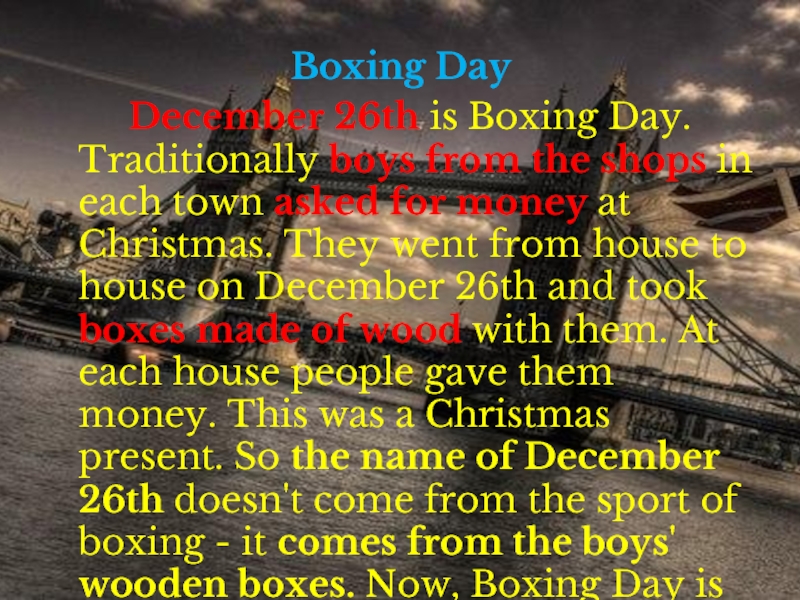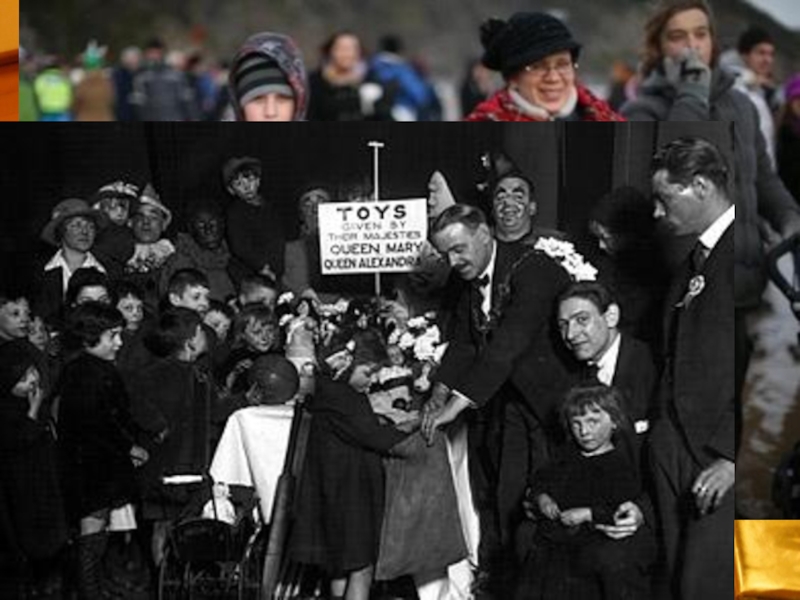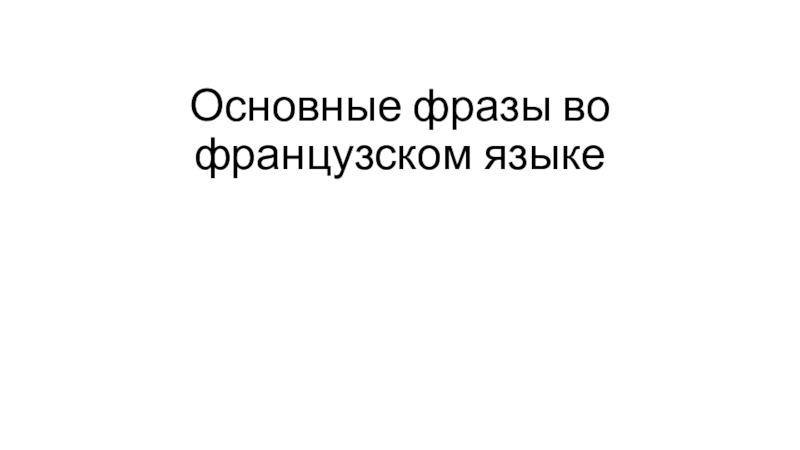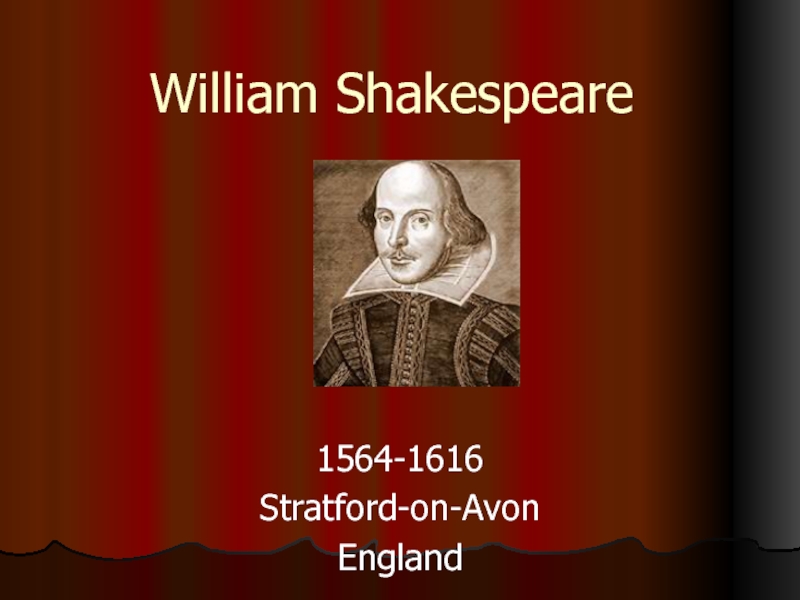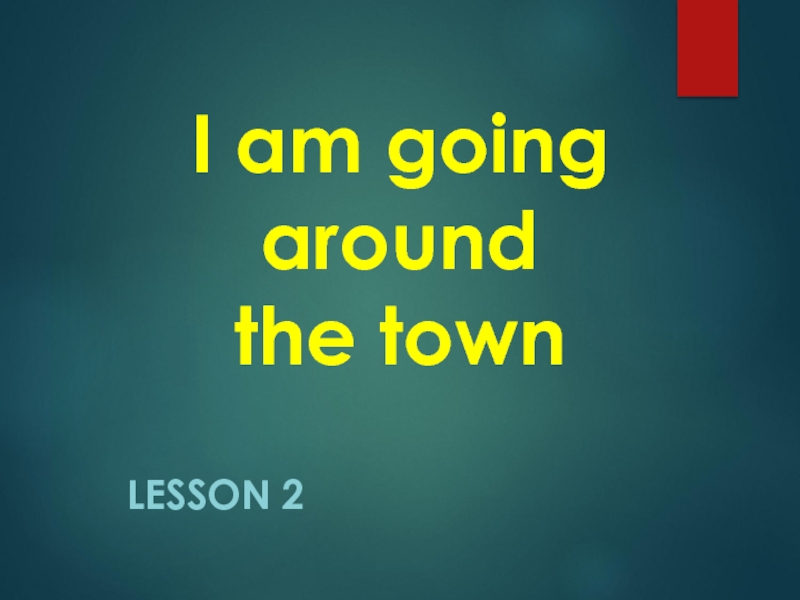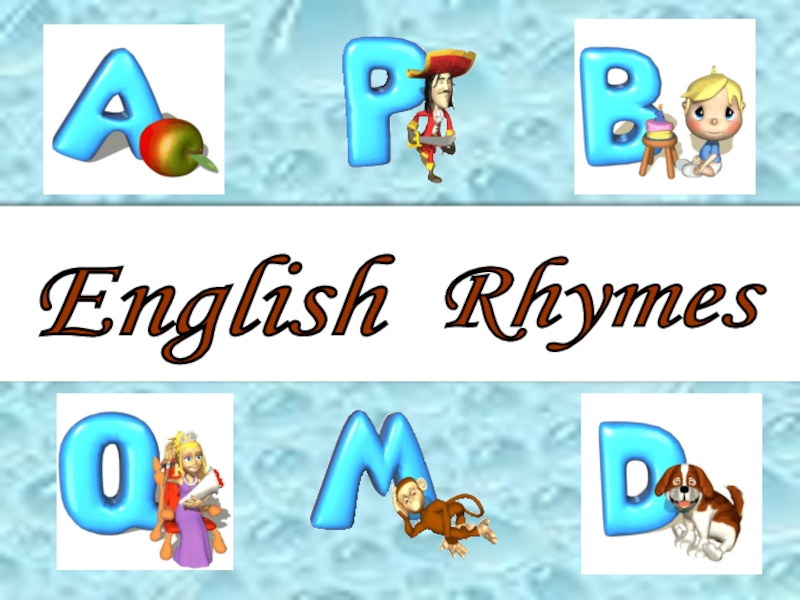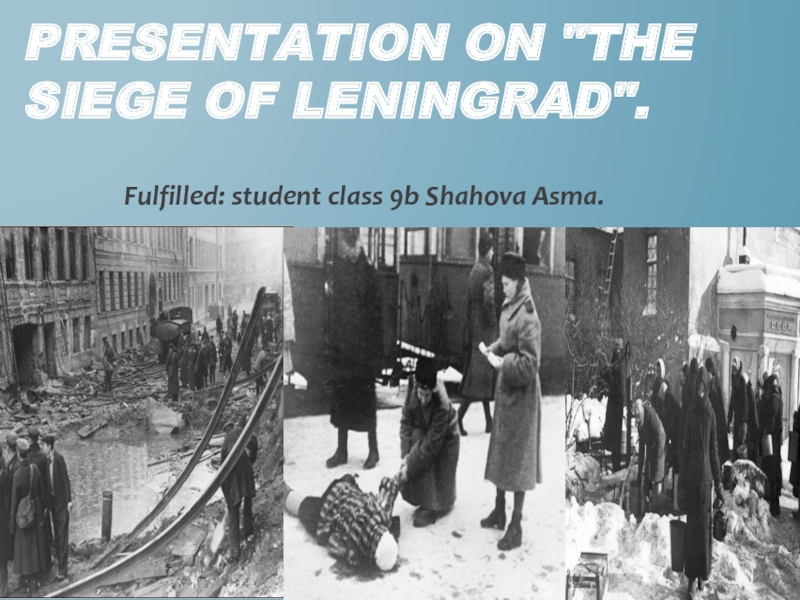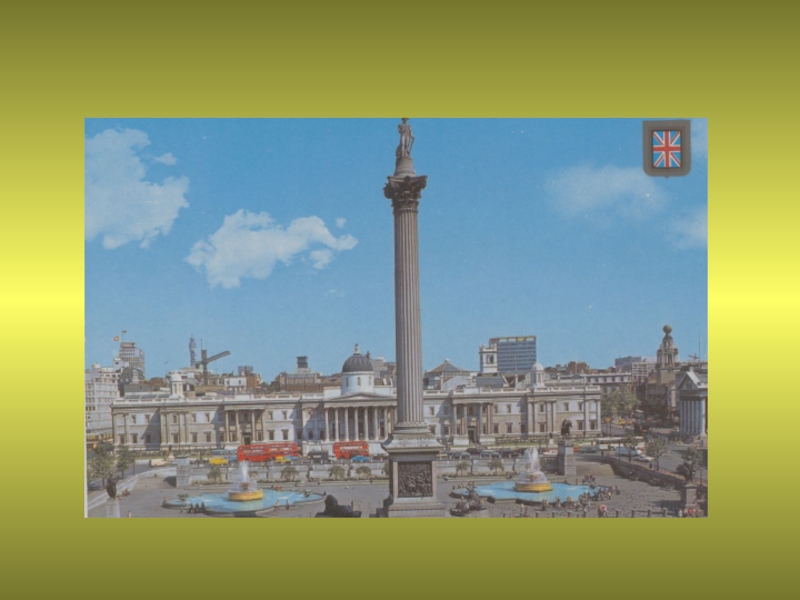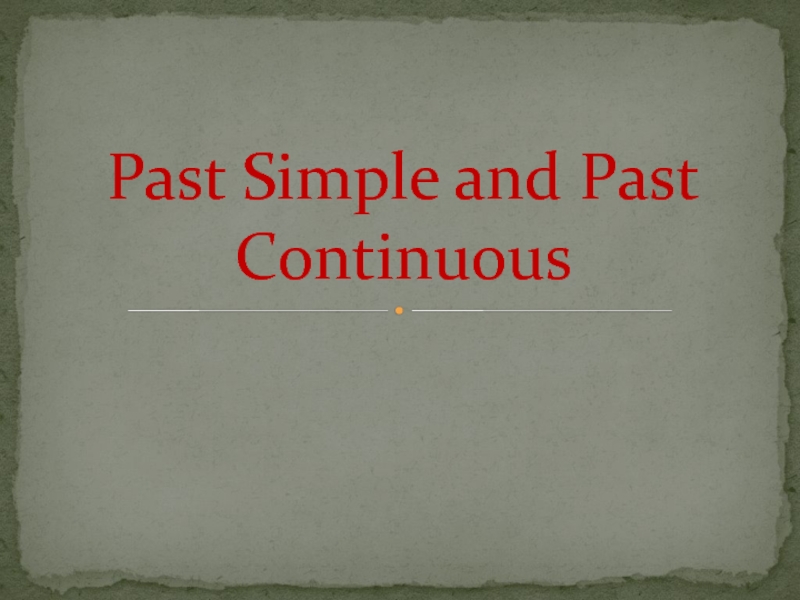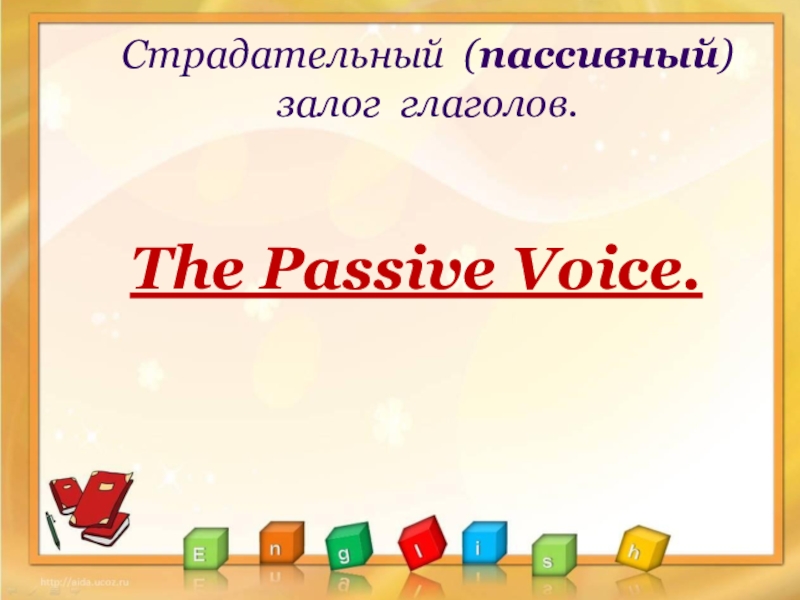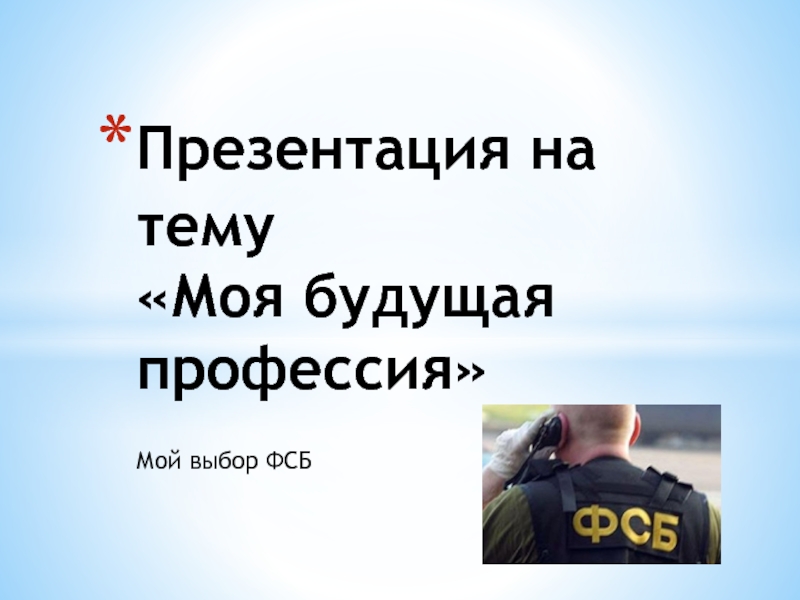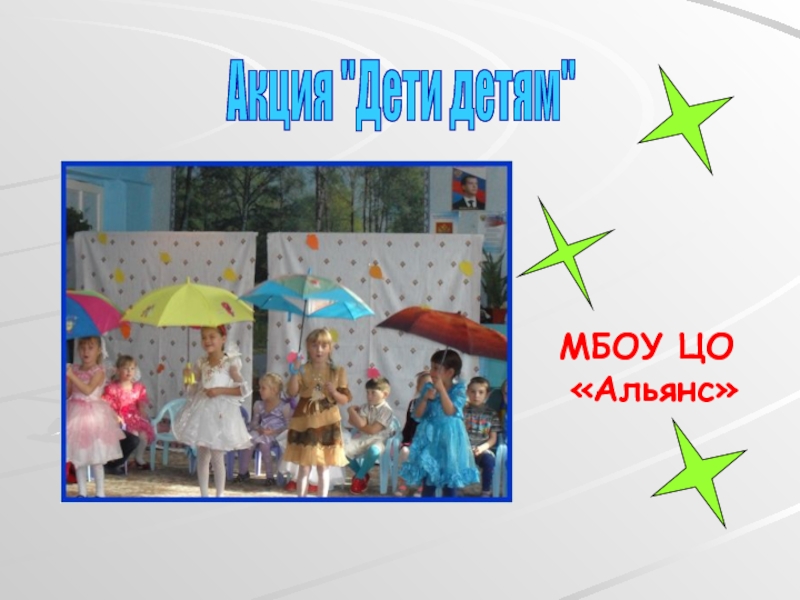Разделы презентаций
- Разное
- Английский язык
- Астрономия
- Алгебра
- Биология
- География
- Геометрия
- Детские презентации
- Информатика
- История
- Литература
- Математика
- Медицина
- Менеджмент
- Музыка
- МХК
- Немецкий язык
- ОБЖ
- Обществознание
- Окружающий мир
- Педагогика
- Русский язык
- Технология
- Физика
- Философия
- Химия
- Шаблоны, картинки для презентаций
- Экология
- Экономика
- Юриспруденция
British Customs and Traditions
Содержание
- 1. British Customs and Traditions
- 2. Some British customs and traditions are famous
- 3. From Scotland to Cornwall, Britain is
- 4. So many countries so many customs, an
- 5. JANUARYUp-HeIIy-Aa The Shetlands are islands near Scotland. In
- 6. Слайд 6
- 7. FEBRUARYSt Valentine's Day St Valentine is the saint
- 8. Слайд 8
- 9. MARCHSt David's Day March 1st is a very
- 10. Слайд 10
- 11. APRILApril Fool's Day April 1st is April Fool's
- 12. Слайд 12
- 13. MAYMay Day May 1st was an important day
- 14. Слайд 14
- 15. JUNEMidsummer's Day Midsummer's Day, June 24th, is the
- 16. Слайд 16
- 17. OCTOBERHalloween October 31st is Halloween, and you can
- 18. Слайд 18
- 19. NOVEMBERGuy Fawkes' Day November 5th is Guy Faw
- 20. Слайд 20
- 21. DECEMBERChristmas and the New Year There are lots
- 22. Слайд 22
- 23. Boxing Day December 26th is Boxing Day. Traditionally
- 24. Слайд 24
- 25. Скачать презентанцию
Some British customs and traditions are famous all over the world. Bowler hats, tea and talking about the weather, for example. But what about the others?
Слайды и текст этой презентации
Слайд 2 Some British customs and traditions are famous all over the
world. Bowler hats, tea and talking about the weather, for
example. But what about the others?Слайд 3 From Scotland to Cornwall, Britain is full of customs and
traditions. A lot of them have very long histories. Some
are funny and some are strange. But they're all interesting. They are all part of the British way of life.Слайд 4 So many countries so many customs, an English proverb says. The
British have many traditions, manners & customs of which they
can be proud.Слайд 5JANUARY
Up-HeIIy-Aa
The Shetlands are islands near Scotland. In the ninth centurv,
men from Norway came to the Shetlands. These were the
Vikings. They came to Britain in ships and carried away animals, gold, and sometimes women and children, too.Now, 1 ,OOO years later, people in the Shetlands remember the Vikings with a festival. They call the festival "Up-Helly-Aa".
Every winter the people of Lerwick, a town in the Shetlands, make a model of a ship. It's a Viking "long-ship", with the head of a dragon at the front. Then, on Up-Helly-Aa night in January, the Shetlanders dress in Viking clothes. They carry the ship through the town to the sea. There they burn it. They do this because the Vikings put their dead men in ships and burned them. But there aren't any men in the modern ships. Now the festival is a party for the people of the Shetland Islands.
Слайд 7FEBRUARY
St Valentine's Day
St Valentine is the saint of people in
love, and St Valentine's Day is February 14th. On that
day, people send Valentine cards and presents to their husbands, wives, boyfriends and girlfriends. You can also send a card to a person you don't know. But traditionally you must never write your name on it. Some British newspapers have a page for Valentine's Day messages on Februarv 14th.Слайд 9MARCH
St David's Day
March 1st is a very important day for
Welsh people. It's St David's Day. He's the "patron" or
national saint of Wales.On March 1st, the Welsh celebrate St David's Day and wear daffodils in the buttonholes of their coats or jackets.
Слайд 11APRIL
April Fool's Day
April 1st is April Fool's Day in Britain.
This is a very old tradition from the Middle Ages
(between the fifth and fifteenth centuries). At that time the servants were masters for one day of the year. They gave orders to their masters, and their masters had to obey.Now April Fool's Day is different. It's a day for jokes and tricks.
Слайд 13MAY
May Day
May 1st was an important day in the Middle
Ages. In the very early morning, young girls went to
the fields and washed their faces with dew. They believed this made them very beautiful for a year after that. Also on May Day the young men of each village tried to win prizes with their bows and arrows, and people danced round the maypole.Many English-villages still have a maypole, and on May 1st, the villagers dance round it.
Слайд 15JUNE
Midsummer's Day
Midsummer's Day, June 24th, is the longest day of
the year. On that day you can see a very
old custom at Stonehenge, in Wiltshire, England. Stonehenge is one of Europe's biggest stone circles. A lot of the stones are ten or twelve metres high. It's also very old. The earliest part of Stonehenge is nearly 5,000 years old.But what was Stonehenge? A holy place? A market? Or was it a kind of calendar? We think the Druids used it for a calendar. The Druids were the priests in Britain 2,000 years ago. They used the sun and the stones at Stonehenge to know the start of months and seasons. There are Druids in Britain today, too. And every June 24th a lot of them go to Stonehenge. On that morning the sun shines on one famous stone - the Heel stone. For the Druids this is a very important moment in the year. But for a lot of British people it's just a strange old custom.
Слайд 17OCTOBER
Halloween
October 31st is Halloween, and you can expect to meet
witches and ghosts that night. Halloween is an old word
for "Hallows Evening", the night before "All Hallows" or "All Saints' Day"On that one night of the year, ghosts and witches are free. Well, that's the traditional story. A long time ago people were afraid and stayed at home on Halloween. But now in Britain its a time for fun. There are always a lot of parties on October 31st. At these parties people wear masks and they dress as ghosts and witches, or as Dracula or Frankenstein's monster. And some people make special Halloween lamps from a large fruit, the pumpkin.
First they take out the middle of the pumpkin. Then they cut holes for the eyes, nose and mouth. Finally they put a candle inside the pumpkin.
Слайд 19NOVEMBER
Guy Fawkes' Day
November 5th is Guy Faw kes’ Day in
Britain. All over the country people build wood fires or
“bonfires”, in their gardens. On top of each bonfire is a guy. That's a figure of Guy Fawkes. People make guys with straw, old clothes and newspapers. But before November 5th, children use their guys to make money They stand in the street and shout "Penny for the guy". Then they spend the money on fireworks. But how did this tradition start? Who was Guy Fawkes and why do the British remember him on November 5th?On November 5th 1605, Guy Fawkes tried to kill King James I. He and a group of friends put a bomb under the Houses of Parliament in London. But the King's men found the bomb and they found Guy Fawkes, too. They took him to the Tower of London and there the King's men cut off his head.
Слайд 21DECEMBER
Christmas and the New Year
There are lots of Christmas and
New Year traditions in Britain.
For example...
London's Ghristmas decorations Every year
the people of Norway give the city of London a present.. It's a big Christmas tree and it stands in Trafalgar Square.Traditionally people decorate their trees on Christmas Eve - that's December 24th. They take down the decorations twelve days later, on Twelfth Night (January 5th). An older tradition is Christmas mistletoe. People put a piece of this green plant with its white berries over a door. Mistletoe brings good luck, people say. Also, at Christmas British people kiss their friends and family under the mistletoe.
Carols
Before Christmas, groups of singers go from house to house. They collect money and sing traditional Christmas songs or carols. There are a lot of very popular British Christmas carols. Three famous ones are:
"Good King Wenceslas", "The Holly and The Ivy" and "We Three Kings".
